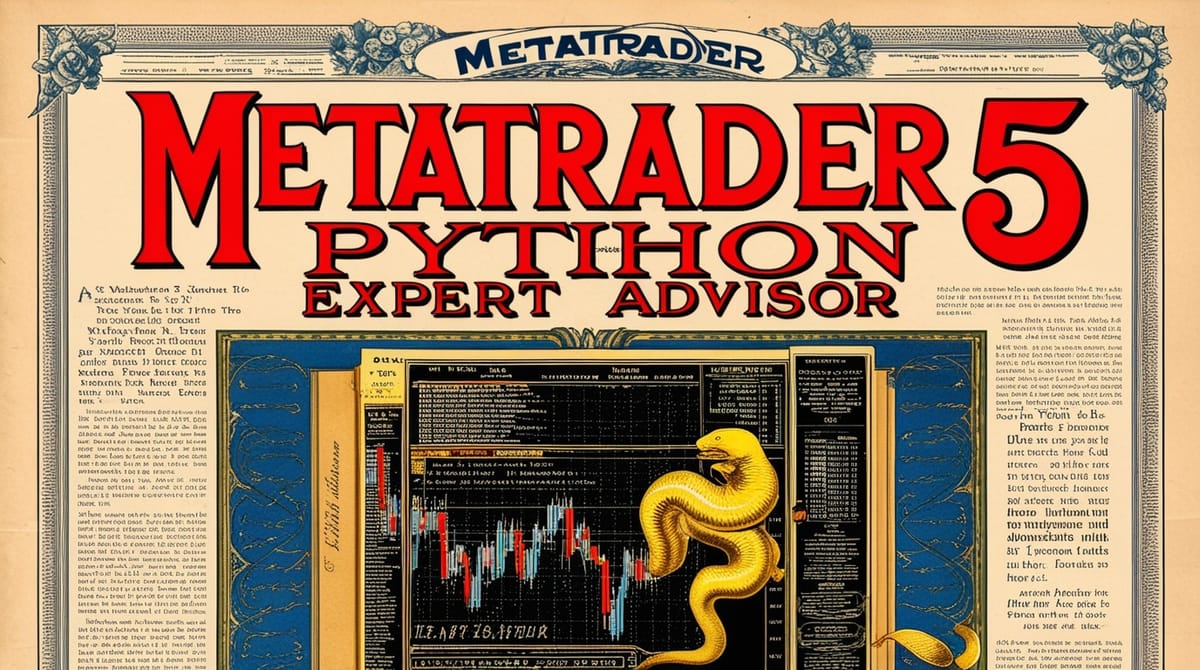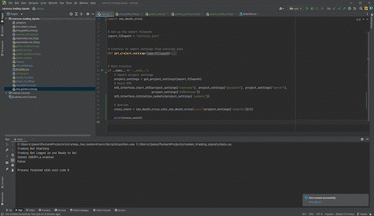How to calculate an SMA Death Cross with Python and MetaTrader5
Learn how to calculate a Cross of Death on Simple Moving Averages using Python 3, Pandas and MetaTrader 5.

Learn how to calculate a Cross of Death on Simple Moving Averages using Python 3, Pandas and MetaTrader 5.
There are a ton of signals to analyze when using quantitative analysis for stock/crypto/futures/FOREX trading!
This series demonstrates the automated analysis of 8 different market signals.
Using Python 3, Python Pandas, and MetaTrader5, I’ll show you how to calculate 8 common signals.
All code for this tutorial can be found on my GitHub, and I’ve included working code samples throughout (use at your own risk, give me a shout-out if you do).
 The Disruption ContinuumJames Hinton
The Disruption ContinuumJames Hinton
Requirements and assumed knowledge as follows:
What would it take for Crypto, AI, and Cyber to truly change the world?
No spam. Unsubscribe anytime.
The ‘Cross of Death’ (aka Death Cross) is a stock market chart pattern reflecting recent price weakness. In generic terms, it occurs when a shorter-term moving average drops below a longer-term moving average.
For SMA stock calculations, these time periods are frequently the 50-day moving average and 200-day moving average. I.e. a death cross occurs when the 50-day moving average drops below the 200-day moving average. Visually this might look like this:

A Death Cross occurs mathematically when the previous short-term moving average is above the previous long-term moving average and the current short-term moving average is below the current long-term moving average.
Simplified into pseudo-code:
prev_50prev_200curr_50curr_200prev_50 > prev_200 AND curr_50 < curr_200 : cross_of_death = TrueThis can be calculated using the Simple Moving Average (SMA) and Exponential Moving Average (EMA).
To turn this into code, I’ll start by developing a generic SMA death cross function that can be applied to any timeframe. I’ve assumed that we’ll use a 50 and 200 SMA for comparison (although you could change the function to calculate different SMAs).
Here’s the code:
import mt5_interface
import pandas
# Function to calculate a death cross event from Moving Averages
def generic_sma_death_cross_calculator(symbol, timeframe):
# Retrieve 201 rows of timeframe data
raw_data = mt5_interface.query_historic_data(symbol=symbol, timeframe=timeframe, number_of_candles=201)
#### Split into required time periods
# Convert raw data into Dataframe
dataframe = pandas.DataFrame(raw_data)
# Get the previous SMA 50
prev_50_data = dataframe.iloc[-51:-1]
# Calculate the mean
prev_50 = prev_50_data['close'].mean()
# Get the current SMA 50
curr_50_data = dataframe.iloc[-50:]
# Calculate the mean
curr_50 = curr_50_data['close'].mean()
# Get the previous SMA 200
prev_200_data = dataframe.iloc[-201:-1]
# Calculate the mean
prev_200 = prev_200_data['close'].mean()
# Get the current SMA 200
curr_200_data = dataframe.iloc[-200:]
# Calculate the mean
curr_200 = curr_200_data['close'].mean()
# Compare to see if a Cross of Death has occurred
if prev_50 > prev_200 and curr_50 < curr_200:
return True
return FalseNote. The file mt5_interface.py contains the code to connect to MetaTrader.
If you want to run it now in your __main__ here’s a Gist of my main.py:
import json
import os
import mt5_interface
import generic_death_cross
# Set up the import filepath
import_filepath = "settings.json"
# Function to import settings from settings.json
def get_project_settings(importFilepath):
# Test the filepath to sure it exists
if os.path.exists(importFilepath):
# Open the file
f = open(importFilepath, "r")
# Get the information from file
project_settings = json.load(f)
# Close the file
f.close()
# Return project settings to program
return project_settings
else:
return ImportError
# Main function
if __name__ == '__main__':
# Import project settings
project_settings = get_project_settings(import_filepath)
# Start MT5
mt5_interface.start_mt5(project_settings["username"], project_settings["password"], project_settings["server"],
project_settings["mt5Pathway"])
mt5_interface.initialize_symbols(project_settings['symbols'])
# Queries
cross_event = generic_death_cross.generic_sma_death_cross_calculator(symbol=project_settings['symbols'][0], timeframe="D1")
print(cross_event)Abstracting the generic SMA Death Cross function means determining if a Cross of Death has occurred in the last day is only a few lines:
import generic_death_cross
# Function to calculate a Death Cross event
def calc_sma_death_cross(symbol):
return generic_death_cross.generic_sma_death_cross_calculator(symbol=symbol, timeframe="D1")If you update your __main__ to reference this new function, then run it, you should get a boolean True or False like I have below (your results will vary based on when you do it and what symbol you use):

As they say, ‘That’s a Wrap!’ I hope this helps your trading journey — let me know how it goes in the comments below.
I love hearing from my readers, so feel free to reach out. It means a ton to me when you clap for my articles or drop a friendly comment — it helps me know that my content is helping.
❤